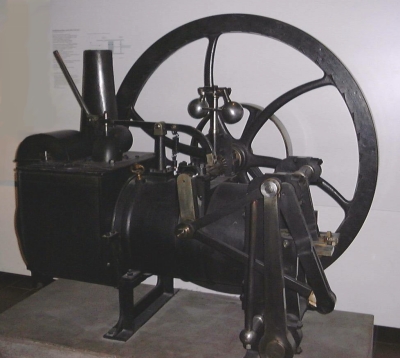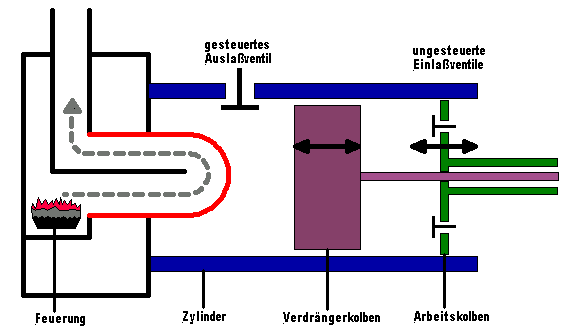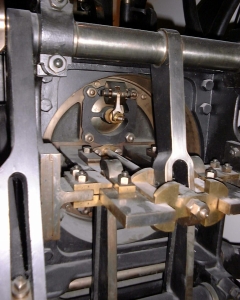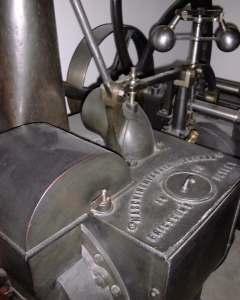Heißluftmaschine nach John Ericsson
Hot-Air Machine by John Ericsson

John Ericsson (Sweden and subsequently USA) started building
hot-air engines about 1833. It was not until the engine designed in 1860
that they were suitable for practical purposes. Although these engines
were noisy and of low efficency about 3000 of them were sold.

Ericsson engines operate with open cycle: air is heated
in a part of the cylinder. It expands, flows around the displacement piston
and pushes the working piston along. As this is done work is performed.
The displacement piston follows this movement and presses the cooling air
through the controlled and now opened outlet valve into the atmosphere.
Fresh air flows in through the uncontrolled inlet valves in the bottom
of the working piston. It is pushed into the heated part of the cylinder
by the the return movement of the two pistons.
| Leistung: | 0,5 kW |
| Drehzahl: | 54 min-1 |
| Brennstoffverbrauch: | 6 kg Kohle pro Stunde |
| Output: | 0,5 kW |
| Speed: | 54 r.p.m. |
| Fuel consumption: | 6 kg coal per hour |

